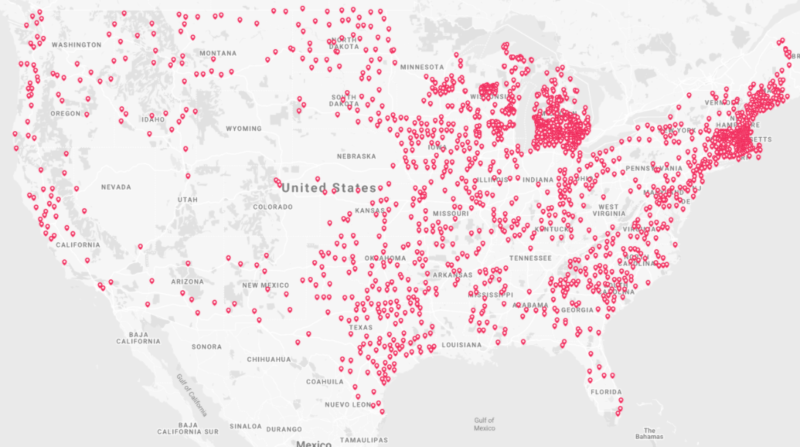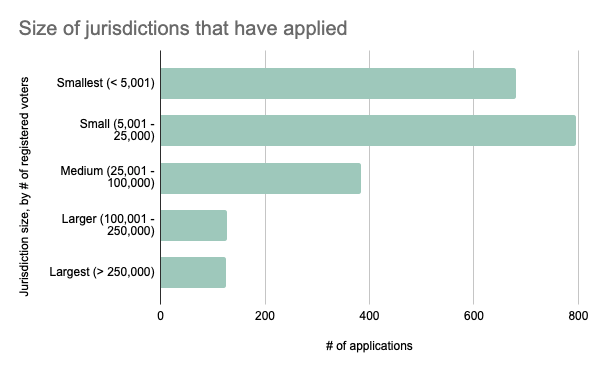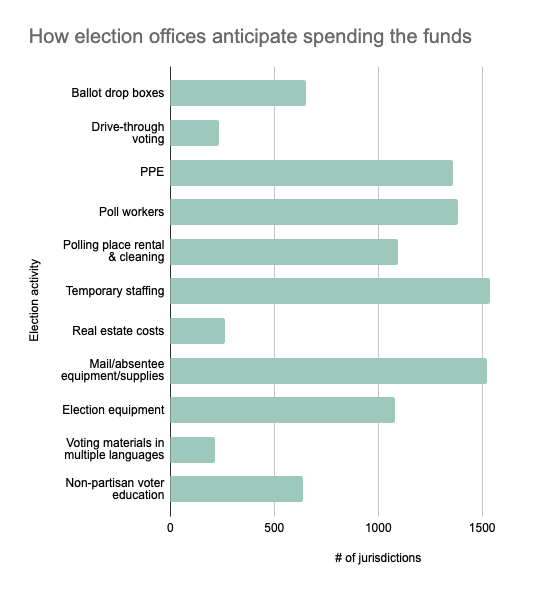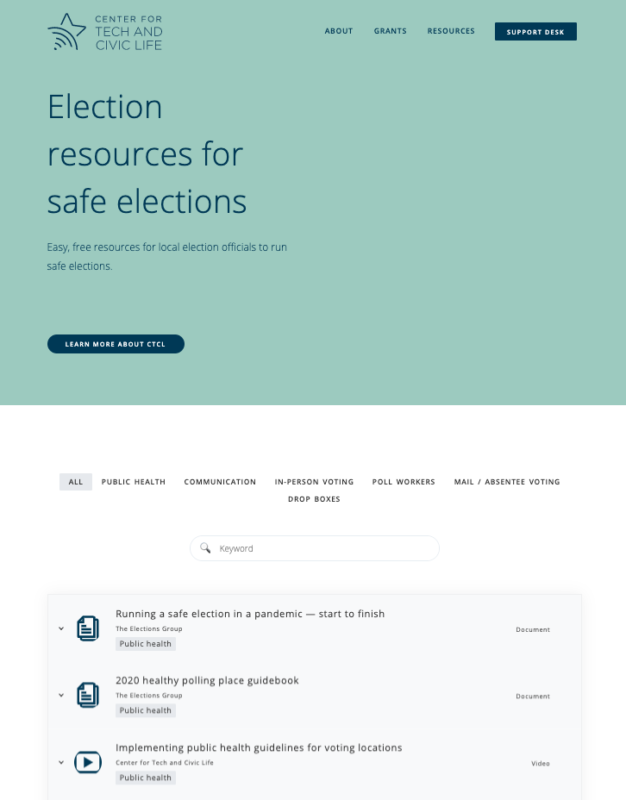CTCL Grant Program Receives Over 2,100 Applications and Counting
We’ve heard repeatedly about the desperate need for election administration funding. We’ve heard this from countless election officials, from across the political spectrum, geographic boundaries, and jurisdiction sizes. The COVID-19 pandemic brings unprecedented challenges that most election budgets aren’t equipped to handle.
That’s why we recently launched our CTCL COVID-19 Response Grant Program. It provides funding to U.S. local election offices to help ensure they have the critical resources they need to safely serve every voter in 2020. The grant program is an open call to every local election office in the country, and we’re thrilled to announce we’ve received over 2,100 applications (and counting!).
The program has been so well received that we extended the application deadline. All U.S. local election offices that have not previously applied are invited to apply by Thursday, October 15th.
All local election offices responsible for administering election activities covered by the CTCL COVID-19 Response grant program are eligible to apply for grant funds. Every eligible election department that is verified as legitimate will be approved for a grant. The minimum CTCL COVID-19 Response Grant amount awarded is $5,000.
Which election offices have applied for funds
The pin-map below speaks to the sheer volume of applications we’ve received, as well as the geographic diversity. While we haven’t hit all 50 states yet, we’re so close.

In most states, elections are run at the county level. Texas has 254 counties, and nearly half of them have applied. States like Michigan, on the other hand, administer most election duties at the city and township levels. This explains why Michigan looks more heavily-dotted than Texas, even though less than 30% of election offices in Michigan have applied for grants, compared to ~50% in Texas.
Beyond geographic diversity, we’re seeing a wide range in jurisdiction size. As you can see in the chart below, the vast majority of applications are coming from jurisdictions with less than 25,000 registered voters.

Funding shortages hit low-budget offices hardest, and rural jurisdictions are often overlooked in the national landscape. That’s why the previous iteration of our grant program — before the $250 million contribution allowed us to scale up nationwide — included grants explicitly for rural jurisdictions. While we encourage every election office, large and small, to apply for these open-call grants, we especially love getting applications from particularly under-resourced election offices.
What local election officials are saying about the grants
One of the most rewarding parts of the process has been hearing the excitement, energy, and gratitude from election officials after they receive funding. We’d like to share a few of our favorite messages:
“The pressure these funds take off the shoulders of the front line people trying to implement the law during this pandemic cannot be overemphasized.”
“I can’t tell you enough how thrilled I am to receive this grant. We are a small community struggling to find ways to handle unfunded mandates, especially during a pandemic. It means a lot to us to ensure our election process is done in all the right ways.”
“Election officials have worked tirelessly this cycle… We love what we do and the public we serve so this is in no way a complaint. Still, to have this cushion at a time when it’s needed is fantastic.”
How election offices anticipate spending the funds
Our job is to get funding into the hands of local election officials, then get out of their way. Election officials know what’s best for their communities and know exactly how to address budget shortfalls in this challenging election cycle. We leave spending decisions to the discretion of each grantee jurisdiction, as long as the election activity falls under these 4 broad categories:
- Ensure Safe, Efficient Election Day Administration
- Expand Voter Education & Outreach Efforts
- Launch Poll Worker Recruitment, Training & Safety Efforts
- Support Early In-Person Voting and Vote by Mail
We asked jurisdictions for a preview of how they intend to spend the money, and the following chart summarizes their responses. The most common expenses include personal protective equipment, poll worker recruitment and training, temporary staffing, and mail/absentee equipment and supplies.

We will continue connecting election offices with the funding they need, and promoting the opportunity to offices who haven’t yet applied. Our goal is to provide funding to every election office that wants it — large and small, in all 50 states.
What other resources are available?
We’re thrilled to launch a new website, resources.techandciviclife.org, a collection of free, curated, and practical election resources for safe elections!

Why this website, and why now? We’ve heard from grantee jurisdictions that there are so many resources, recommendations, and tools available that it can be difficult to quickly locate what you need. Right now, time is the most important resource! That’s why we curated the most relevant, actionable material on 6 topics:
- Public health
- Communication
- In-person voting
- Poll workers
- Mail / absentee voting
- Drop boxes
If you still can’t find what you’re looking for, the website also includes a dedicated Elections IT Support Desk to field technical questions, large and small.
Election officials make democracy happen. Through our work at the Center for Tech and Civic Life, we are grateful to witness the incredible public service of our country’s election officials year round. This year we’ve seen election offices already move mountains to provide a safe, secure, and inclusive process for voters. CTCL is honored to support their work by providing funding and additional resources.